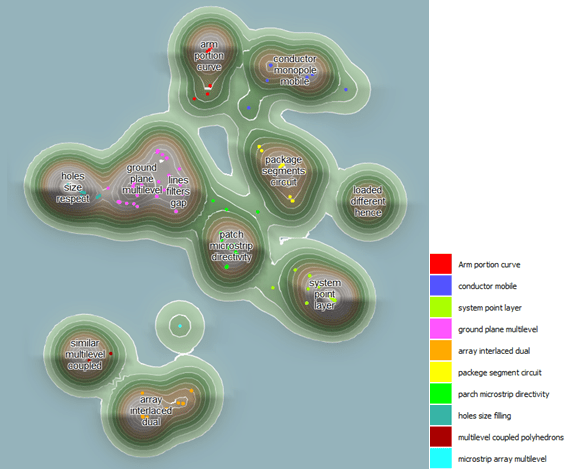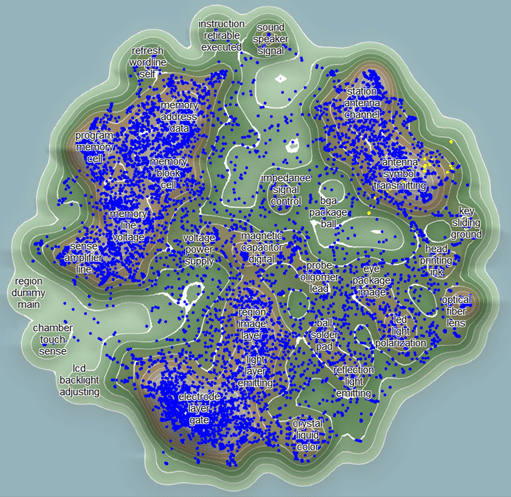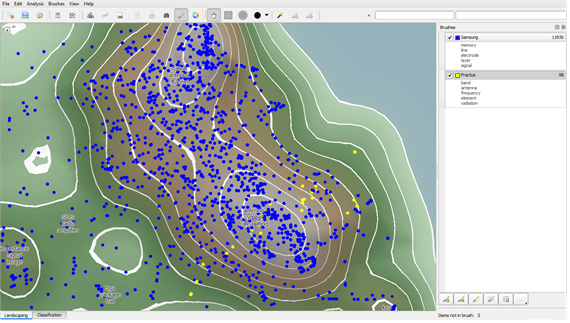By Dr. Elicet Cruz, Iale Tecnologia S.L.
Last July Business Wire published the following news: “Fractus Awarded $41M in Patent Infringement Suit against Samsung”
Everybody knows Samsung, but…
Who is Fractus?
Fractus is a Spanish fractal antenna manufacturer, spin off from the Polytechnic University of Catalonia (UPC), that licenses its technology to leading manufacturers of wireless devices primarily related to consumer electronics, such as mobile phones.
A fractal antenna is, according to Wikipedia, an antenna that uses a fractal, designed to maximize distance or perimeter that can receive or transmit, in a given area or volume. A fractal antenna has a frequency response completely different from traditional antennas because it is able to offer excellent reception at different frequencies simultaneously.
These antennas are used in mobile devices, tablets, laptops, navigation devices, and other short-range wireless devices, automotive and telecommunications infrastructure.
How many patents has Fractus in its portfolio?
Using IFIClaims Global Database we carry out a search on Fractus patents (pa: Fractus) and we identify a patent portfolio consisting today of 426 patents granted and applied worldwide. Figure 1 shows a landscape map, produced by KMX, of the Fractus patents. KMX also groups them into ten main clusters or differentiated areas in the map.
Figure 1. Applied and granted patents by Fractus. Source: IFIClaims KMX, October 2012
In 2006, Fractus decided to reorient its business activity from manufacturing to licensing patents to third parties. This came after they suffered substantial losses due to the violation of their IP.
Fractus turnover has gone from $ 3.6 million in 2009 making fractal antennas, to $111 million in 2012 from strategic agreements with major mobile phone manufacturers (LG, HTC, RIM, Motorola, Sanyo, Pantech, Sharp, Palm, UTStarcom). Only Samsung refused to agree to a negotiated settlement with them and Fractus filed a suit against Samsung alleging a violation of intellectual property rights. Last July, Fractus has won the suit – see “Fractus Awarded $14M in Patent Infringement Suit”.
Does Samsung hold patents on antennas?
Figure 2 shows Samsung’s patents (colored in blue) classified with KMX, together with Fractus’s patents (colored yellow). Some coincidences in the technological field of antennas for signal transmission are observed. Particularly noticeable is Fractus’ high degree of specialization.
Figure 2. Samsung and Fractus patents (applied and granted) Source: IFIClaims KMX, October 2012
Figure 3 zooms into the “Antenna” cluster. Although Fractus is dominated numerically by Samsung in the antenna space, the results of the lawsuit show that Fractus has a strong IP position. Patent counts can sometimes be misleading.
Figure 3. Samsung and Fractus patents (applied and granted), Zoom from Figure 2.
Does Samsung have patents on Multilevel fractal antennas?
In the case against Samsung, Fractus has proved that the former deliberately infringed four patents. These patents cover regular multiband internal antennas in mobile phones, tablets, laptops, navigation devices and other wireless devices. Patents US7015868, US7123208, US7394432 and US7397431 have been the cause of dispute, and belong to a family of multilevel patents ("Multilevel" or MLV) claiming antennas made by multilevel structure.
The verdict demonstrated, among other things, that Samsung never patented technologies related to optimized antennas developed with a multilevel structure. Figure 4 shows Samsung patents and the multilevel patent family from Fractus in dispute.
When undertaking a more focused search on multilevel fractal antenna patents from both companies, we can state that Samsung has not protected technologies in this area, unlike Fractus that has many of them, as can be seen in the figure.
Figure 4. Patents on Multilevel fractal antennas from Fractus (coloured in red). Source: IFIClaims KMX, October 2012
Do other companies have patents on optimized or fractal antennas?
When searching for other companies with applied or granted patented inventions in the field of antennas, and specifically on multilevel fractals, only two other companies appear: Ficosa Internacional and Advanced Automotive Antennas (A3). Ficosa is a multinational producer of automotive systems and components which has come to an agreement with Fractus that includes license rights for the use, application and development of the fractal technology to the automotive industry worldwide. In 2002, Fractus and Ficosa created a joint venture called Advanced Automotive Antennas (A3). A3 is dedicated to the application of Fractus technology, products and services to the automotive industry.
Fractus has sold over 25 million fractal antennas worldwide and strategically licenses the rights of their patents. Its objectives in the medium and short term are to continue developing even smaller antennas and with higher transmission capacity for consumer products such as smartphones and tablets, for which they have already submitted several patent applications.
Fractus, known in the international market for its licensing strategy, will continue using the courts to prevent other companies from violating its proprietary technologies, regardless of whether they are the most influential multinational companies in the global technology sector.
References
FRACTUS, S.A. Plaintiff vs. SAMSUNG ELECTRONICS CO., LTD., ET AL., Defendants. CASE NO. 6:09-CV-203 PATENT CASE. IN THE UNITED STATES DISTRICT COURT FOR THE EASTERN DISTRICT OF TEXAS TYLER DIVISION.



